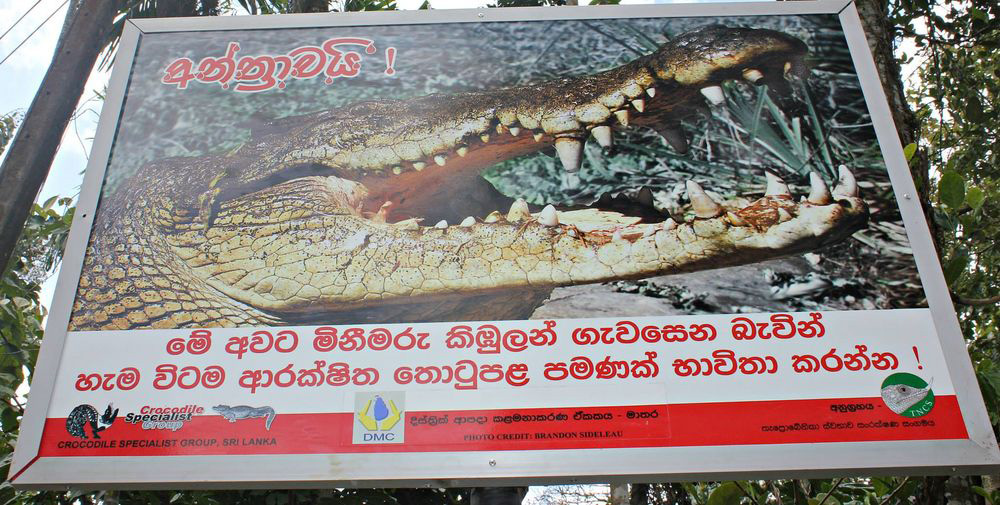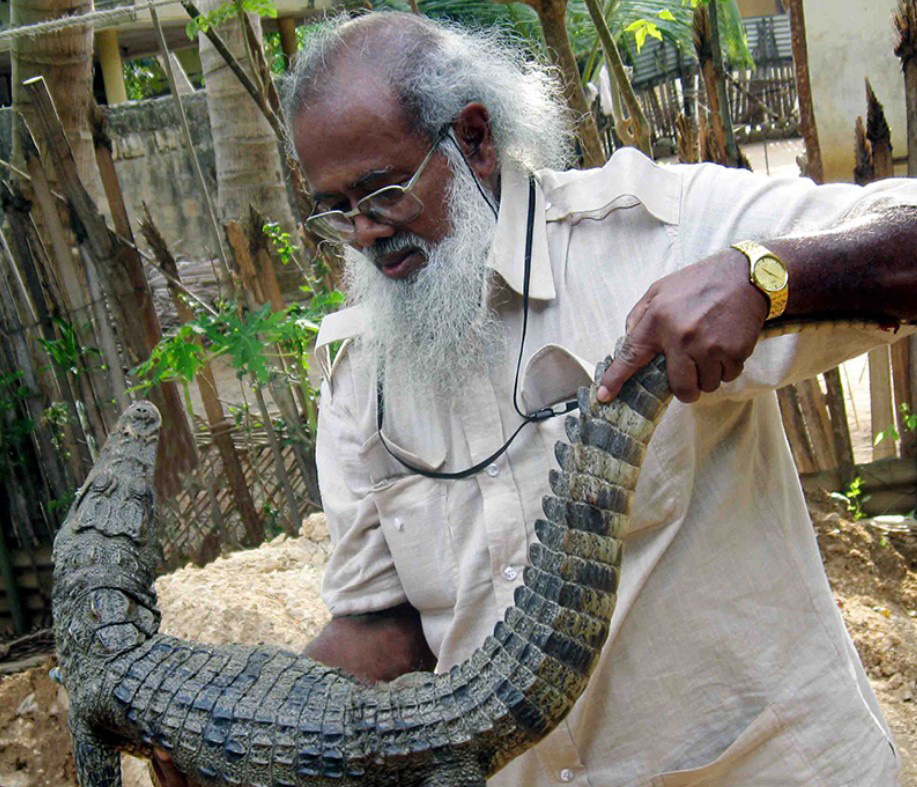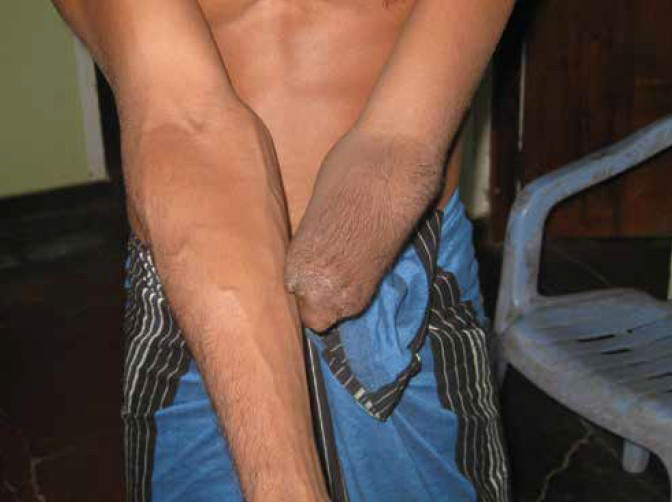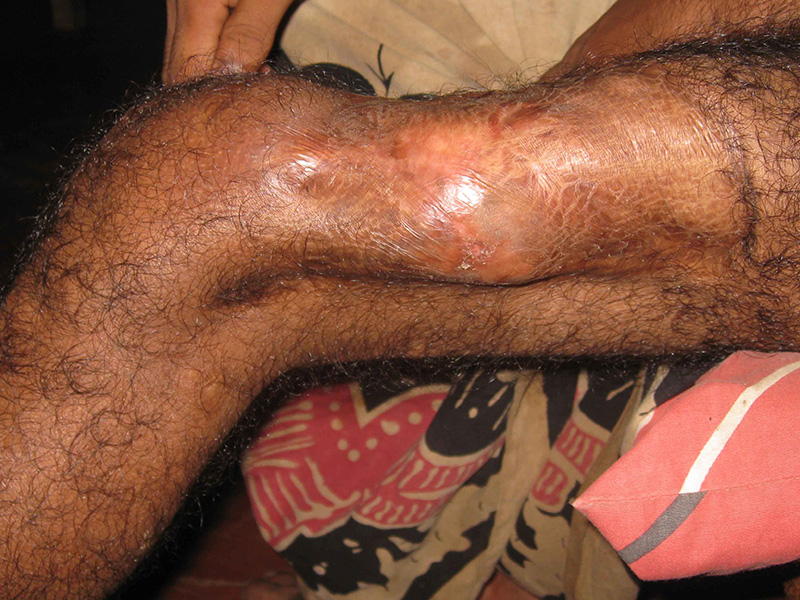Features
Evolution from AM radio to Digital TV broadcasting

Parliamentary Acts on Broadcasting and Telecommunications
by DR JANAKA RATNASIRI
The Cabinet of Ministers (COM) has recently decided to update the Parliamentary Acts on Broadcasting, Rupavahini and Telecommunications and introduce a Bill on establishing a Broadcasting Regulatory Commission. Since, all these are interlinked, it is necessary to take a holistic view of them, taking into consideration new developments such as digital broadcasting. Before that, it would be pertinent to consider the historical development of these services.
USE OF ELECTROMAGNETIC WAVES FOR COMMUNICATION
The Electromagnetic (EM) Spectrum comprising EM waves, extends from high energetic gamma rays, X-Rays and ultra-violet rays on one extreme to low energetic visible, infra-red, microwaves and radio waves on the other extreme. All these are generated naturally by the sun, but almost all of the high energetic radiations get absorbed in the upper atmosphere and only the low energetic radiations are received at ground level. They are also generated by man for various applications like X-Rays, microwaves and radio waves. Out of these, microwaves and radio waves are used for telecommunication purposes, commonly referred to as wireless communication.
EM waves comprise oscillating electric and magnetic fields generated when electrons oscillate either in a plasma or in a conductor. These two fields have their directions perpendicular to each other. They cause radiation of energy in the form of a wave travelling in a direction perpendicular to directions of both electric and magnetic fields. They are characterized by the fact their frequency in Hertz (Hz) and wavelength in metres (m) are inversely proportional to each other with their product equal to the speed of light in vacuum which is 299.8 million m/s. It was James Maxwell who presented the theory of EM waves around 1865 while Gustav Hertz demonstrated their existence in 1887 which earned him the Nobel Prize for Physics in 1925.
Hertz’s discovery led to Guglielmo Marconi demonstrating in 1901 that high frequency (HF) waves could be used to send signals across the Atlantic. This caused the birth of the telecommunication industry, for which he received the Nobel Prize for Physics in 1909. Though HF radio waves were used for long distance communication, the mechanism of their propagation over several thousands of kilo-metres was not understood at that time. Theories of propagation available at that time considered only ground wave propagation which has limited range and line-of-sight propagation which also has limited range along the Earth’s surface. Hence, coverage across the Atlantic was a puzzle at that time.
It was left to Edward Appleton to explain this phenomenon when he discovered in 1927 the existence of the ionosphere, a layer of charged particles lying about 100 km above the ground, which bounces off these radio waves back to the Earth when they are incident on it. Appleton received the Nobel Prize for Physics in 1947 for this discovery. It was soon found that radio waves could be used not only for telecommunication purposes, but also for providing voice broadcasting services, known as radio, both within and across countries. HF radio waves remained the only means of long-distance telecommunication as well as broadcasting until the mid-sixties when satellite-based communication took over which came into being, thanks to the vision of Sir Arthur C. Clarke announced in 1945 in the Wireless World Magazine.
DEVELOPMENT OF RADIO BROADCASTING SERVICES
Public broadcasting in Sri Lanka commenced in 1925 as Radio Colombo with limited coverage around the city using only MF transmissions. It expanded to a wider coverage about 10 years later and continued till 1949 when its identity was changed to Radio Ceylon. The services were also extended to provide short wave transmissions to provide island-wide coverage though the service was of poor quality due to inherent ionospheric disturbances. Radio Ceylon had one advertisement-free service in each language for many years and added separate commercial services later. Though Radio Ceylon functioned for many years as a semi-government organization under different Ministries from time to time, it lacked a proper legal framework.
To remedy this situation, the Ceylon Broadcasting Corporation (CBC) Act No. 37 of 1966 was passed in Parliament and the CBC was established in 1967 which brought Radio Ceylon to function under it. The Act was amended thrice, to make SLBC both a regulator and a service provider. One amendment was to change its name to Sri Lanka Broadcasting Corporation (SLBC). Another was for the issue of licenses by the Minister to other persons for the establishment of private broadcasting stations. The amended Act also required an owner of a radio receiver to obtain a licence annually through the Post Office. The Act also requires any person selling, assembling, repairing or renting radio equipment to obtain an annual licence from SLBC to perform that function. Thus, the SLBC performed a dual role of being a service provider and a regulator.
The evolution of radio technology from vacuum tube-based home radio receivers available up to sixties to transistor and integrated circuit based portable radio receivers currently available in the market made it impossible to implement the licensing provision. Hence, this requirement was abolished subsequently, but the provision still remains in the Act. Today, every motor car has a built-in radio receiver and every smart mobile telephone has a built-in radio receiver. Hence, there is a need to amend the SLBC Act to remove this outdated provision.
From the inception, radio broadcasting in Sri Lanka was confined to transmission of amplitude modulated (AM) signals which had limited band-width causing high frequencies in the audio signal getting clipped. This affected the quality of musical programmes severely. These transmissions were in the medium frequency (MF) (or medium waves) for short range coverage and high frequencies (HF) (or short waves) for covering the entire island. The short waves reach the listener after getting reflected from the ionosphere which is a dynamical entity and hence the signals received were not steady and of poor quality. In the sixties, SLBC built several MF transmitters in outstations enabling outstation listeners to have the benefit of receiving quality programmes free of ionospheric disturbances.
In the seventies, the SLBC commenced limited transmissions of signals with frequency modulation (FM) on the very high frequency (VHF) band. These transmissions have higher bandwidth and hence the audio programmes received are of high quality, and also require much less power to transmit. They are also not affected by atmospheric or ionospheric disturbances. The only problem is that their coverage is limited to line-of-sight range. Later the service was extended to provide an island-wide coverage through the installation of several transmitters, most of which are installed on hill-tops to extend the coverage.
Up to the end of the 1980s, the SLBC had the monopoly of operating radio services, but in the nineties and twenties, several private parties, exceeding 20, were issued licences to operate radio services in the FM band. Each service was given two frequencies enabling them to cover the entire island. Most of them, except a few who offered religious programmes, came up with only low quality musical programmes providing requests on payment devoting a major share of air time on advertisements which brought the revenue for their survival. The lack of a suitable mechanism to monitor the quality and content of the programmes aired is a serious shortcoming in the present system.
DEVELOPMENT OF TELEVISION BROADCASTING SERVICES
Television (TV) service was introduced to Sri Lanka in 1979 when a private party launched a service voluntarily. Later, it was taken over by the Government. At that time, there was no policy or regulations on establishing TV services in the country. The Sri Lanka Rupavahini Corporation (SLRC) Act, No. 06 of 1982 was passed under which the SLRC was established with functions of the Corporation to carry on a television broadcasting service within Sri Lanka and to promote and develop that service and maintain high standards in programming in the public interest. The Rupavahini TV service was launched by SLRC using a package gifted by Japan, with the main antenna erected on Mt. Pidurutalagala.
The Act is required to register persons engaged in the production of television programmes for broadcasting; to register persons who carry on the business of importing, selling, manufacturing or assembling television receiving sets; to exercise supervision and control over television programmes broadcast by the Corporation; and to exercise supervision and control over foreign and other television crews, producing television programmes for export, among others.
Thus, the SLRC also has a dual role similar to that of SLBC, of being a service provider and a regulator. However, it lacked the powers to implement the provisions to exercise supervision and control on other TV services as described in the last two items given in the previous section. The SLRC Act has provision to issue licences to qualified parties to establish and operate TV stations. Accordingly, 54 private television licenses have been issued licences so far, whereas only 28 telecasting licensees are in operation at present (Cabinet Decision of 04.03.2020).
The Cabinet of Ministers (COM) at its meeting held on 04.01.2021 has decided to amend the SLRC Act to provide for the expansion of its Board of Directors to empower it to implement decisions taken with a view to face the competitive scenario prevailing in the field. No further amendments have been identified even though the Act is totally out of date considering the developments in the field during the last 19 years. There is a need to bring SLRC under the proposed Broadcasting Regulatory Commission to remove the regulatory functions from it and also to remove the provision to possess a licence by a user.
ESTABLISHING A TELECOMMUNICATION REGULATORY COMMISSION
In early days, the telecommunication services were provided by the Posts and Telecommunication Department, which was later bifurcated into two departments. The government passed the Sri Lanka Telecommunication (SLT) Act No. 25 in 1991 which provided for the establishment of the Sri Lanka Telecommunication Authority (SLTA) which took over the functions of the Telecommunication Department. Among the objectives of the SLTA are to ensure the conservation and proper utilization of the radio frequency spectrum by operators and other organizations and individuals who need to use radio frequencies and to make and enforce compliance with rules to minimize electro-magnetic disturbances produced by electrical apparatus and all unauthorized radio frequency emissions, among others.
The SLT Act was amended by Act No. 27 of 1996 whereby the Telecommunications Regulatory Commission of Sri Lanka (TRCSL) was established in place of SLTA. The amended Act made provisions for receiving complaints from the public and holding public hearings on them and retained all the functions assigned to the SLTA. Its regulatory functions were limited to telecommunication service providers and did not cover the broadcasting of radio or TV services, other than assigning frequencies for them. This is unlike in India where the Telecommunication Authority covered regulation of Broadcasting of Radio and TV services both in terms of technical aspects and quality of programmes.
PROPOSAL FOR ESTABLISHING A BROADCASTING REGULATORY COMMISSION
The COM at its meeting held on 04.03.2020 having considered the necessity of having a separate institution to regulate the activities of the broadcasting and telecasting media based on a Committee recommendation approved a draft for setting up a ”Broadcasting Regulatory Commission” (BRC), and decided to explore the possibility of amending the SLTRC Act, to enable it to perform the task of the process of issuing Broadcasting and Telecasting Licenses, which were hitherto issued by the SLBC and SLRC, respectively. The objective is to remove the regulatory functions from these two organizations and transfer them to the new Commission.
As early as 1997, a Broadcasting Authority Bill was presented to the Parliament for the same purpose but it was held unconstitutional by the Constitutional Court because it did not give adequate independence to the Authority. Thereafter, a Select Committee of Parliament with representation of all parties was appointed to consider the problem and met on multiple occasions but the matter was left in abeyance. Now, it has resurfaced under a new heading – Broadcasting Regulatory Commission. However, its contents are not available in the public domain, not even in the Govt Printer’s website.
Unlike in early days when broadcasted programmes whether radio or TV were available only as free-to-air services, today with advances in technology, particularly TV programmes, are brought to residences using either physical cables or UHF links or satellite links or through the internet. Since free-to-air services are not available island-wide with acceptable quality, people opt for these services upon payment of a monthly fee. But some satellite links do not provide a satisfactory service when it rains, though the service provider claims it provides tomorrow’s technology today.
There is also an urgent need to exercise some control on the utilizing of TV medium for advertising purposes. While there is a positive aspect whereby a viewer receives information on a new product or service, the repetitive display of the same commercial of well-known consumer products is nothing but an annoyance. The writer believes that during prime time, between almost 50% of air time is devoted for commercials and promotional clips. This is in contrast to India where only 10 min of commercials are allowed for every 60 min of air-time. Hence, there is a need to have a regulatory body to ensure that satisfactory services are provided to subscribers, both in terms of the quality of signal received and the quality of programmes aired.
A notable characteristic of Sri Lanka’s TV service providers is that they seem to be very prudish when it comes to airing cinematographic material intended for adult audience, but of high quality which have received accolades at international events. The operator loses no time in blanking even a momentary kissing scene in them. The proposed BRC could lay some guidelines on presenting quality adult programmes which have already been cleared by the National Censor Board enabling the adult audience to enjoy them without subjecting them to additional censorship by TV operators. Perhaps, such programmes could be limited for airing during late hours of the day when children have gone to bed.
TRANSITION FROM ANALOG TV TO DIGITAL TV SYSTEMS
There is a global trend to switch from analogue to digital system for television broadcasting as it offers many advantages among which are better spectrum utilization, higher picture and sound quality, accessibility via mobile devices and new business opportunities. Under the sponsorship of the International Telecommunication Union (ITU), a Roadmap for Transition from Analogue to Digital Terrestrial Television Broadcasting (DTTB) in Sri Lanka was jointly developed in 2012 by a team of ITU experts from Korea and the National Roadmap Team (NRT) chaired by TRCSL.
Digital TV transmission, though will provide a high-quality service, will result in added expenditure both for the service provider and the viewer. In order to reduce the financial burden for the service provider, NRT proposed to establish a set of 8 common digital transmitters at sites already being used for TV transmission, for sharing by all service providers. They are expected to provide initially simultaneous transmissions both on analog and digital systems, so that a viewer will be able to receive programmes uninterruptedly when switching from analog to digital system.
As a follow up to the above proposal, the GoSL assigned a “Feasibility Study on Digital Terrestrial Television Broadcasting Network Project” in 2014, to Japan International Cooperation Agency. (). This study recommended setting up of 16 digital transmitters to be managed by a separate body, with the principal tower at Lotus Tower in Colombo. Individual TV services are expected to send their high definition programmes to Lotus Tower by microwave or other links who will in turn broadcast them from the common set of transmitters. By this means, all the TV channels will be received at the same signal strength anywhere in the country.
It was proposed to establish a body to be known as “Digital Broadcast Network Operator” (DBNO) to organize, manage and administer the new system. DBNO is expected to operate and maintain the entire system with the revenue from the operation fees collected from broadcasting stations. The transition to DTTB will result in incurring heavy expenditure by both DBNO and individual service providers, including installing new antenna systems, purchasing digital studio equipment such as cameras, animators, programme mixers etc. all of which could run into Billions of Rupees.
In addition, viewers will have to purchase either set-top-boxes for use with analog receivers or new digital receivers. It may be recalled that with the new development in TV technology, the earlier Cathode-Ray-Tube (CRT) type TV receivers were replaced by slim type LCD/LED TV receivers during the last couple of years. Today, CRT receivers are no longer available in the market. Hence, changing receivers will not be an issue for our viewers, as long as it carries benefits.
In the event the Government decides to adopt the DTTB system, it will be necessary to introduce new laws and regulations to regulate the new DTTB industry, and considering the complexities involved, it is best if a total new Parliament Act is passed, with appropriate amendments to both the SLRC Act and SLT Act. The COM has already decided to amend both these Acts as mentioned above. It is therefore appropriate if the Committee to be appointed for this purpose also be given the mandate to study the desirability of introducing DTTB in Sri Lanka considering costs and benefits as well as viewer preferences and service provider views.
Though the GoSL entered into an agreement with JICA to pursue the matter in 2014, with the change of Government in 2015, the matter was left in abeyance. Under the new Government, the matter is being considered, but no decision has been made as to when it will be implemented and which DTTB standard to adopt, as learned by the writer when he started writing this piece. However, according to a news item telecast in the evening of 19.01.2021, the Japanese Government has offered assistance to Sri Lanka to switch over to DTTB as described in JICA Report issued in 2014, and the Cabinet Spokesman Minister said that Sri Lanka would soon adopt the new system.
CONCLUSION
Sri Lanka will be completing 100 years of public radio broadcasting in four years hence, and has come a long way going through various stages of development. Initially, there were no separate laws to regulate the industry, and the state-owned service provider used to do that function. This position remains unchanged to date and only recently that the Government has considered establishing separate organizations to provide regulatory function. Only the amendment of SLRC Act and SLT Act are being considered along with setting up a new Commission for regulating broadcasting of radio and television services. Hence, there is a need to consider amending these two Acts together with amending the SLBC Act.
With the proposed introduction of digital television transmission in Sri Lanka as reported by the Cabinet spokesman, the Writer suggests that the amendment of the above three Acts should be taken up along with formulating a new Act to cover Digital Transmission Broadcasting since all four are interlinked, before the actual transition takes place. It is hoped that with the introduction of digital TV transmissions the quality of programme content will also improve concurrently.
Features
When floods strike: How nations keep food on the table

Insights from global adaptation strategies
Sri Lanka has been heavily affected by floods, and extreme flooding is rapidly becoming one of the most disruptive climate hazards worldwide. The consequences extend far beyond damaged infrastructure and displaced communities. The food systems and supply networks are among the hardest hit. Floods disrupt food systems through multiple pathways. Croplands are submerged, livestock are lost, and soils become degraded due to erosion or sediment deposition. Infrastructural facilities like roads, bridges, retail shops, storage warehouses, and sales centres are damaged or rendered inaccessible. Without functioning food supply networks, even unaffected food-producing regions struggle to continue daily lives in such disasters. Poor households, particularly those dependent on farming or informal rural economies, face sharp food price increases and income loss, increasing vulnerability and food insecurity.
Many countries now recognie that traditional emergency responses alone are no longer enough. Instead, they are adopting a combination of short-term stabilisation measures and long-term strategies to strengthen food supply chains against recurrent floods. The most common immediate response is the provision of emergency food and cash assistance. Governments, the World Food Programme, and other humanitarian organisations often deliver food, ready-to-eat rations, livestock feed, and livelihood support to affected communities.
Alongside these immediate measures, some nations are implementing long-term strategic actions. These include technology- and data-driven approaches to improve flood preparedness. Early warning systems, using satellite data, hydrological models, and advanced weather forecasting, allow farmers and supply chain operators to prepare for potential disruptions. Digital platforms provide market intelligence, logistics updates, and risk notifications to producers, wholesalers, and transporters. This article highlights examples of such strategies from countries that experience frequent flooding.
China: Grain Reserves and Strategic Preparedness
China maintains a large strategic grain reserve system for rice, wheat, and maize; managed by NFSRA-National Food and Strategic Reserves Administration and Sinograin (China Grain Reserves Corporation (Sinograin Group), funded by the Chinese government, that underpins national food security and enables macro-control of markets during supply shocks. Moreover, improvements in supply chain digitization and hydrological monitoring, the country has strengthened its ability to maintain stable food availability during extreme weather events.
Bangladesh: Turning Vulnerability into Resilience
In recent years, Bangladesh has stood out as one of the world’s most flood-exposed countries, yet it has successfully turned vulnerability into adaptive resilience. Floating agriculture, flood-tolerant rice varieties, and community-run grain reserves now help stabilise food supplies when farmland is submerged. Investments in early-warning systems and river-basin management have further reduced crop losses and protected rural livelihoods.
Netherlands, Japan: High-Tech Models of Flood Resilience
The Netherlands offers a highly technical model. After catastrophic flooding in 1953, the country completely redesigned its water governance approach. Farmland is protected behind sea barriers, rivers are carefully controlled, and land-use zoning is adaptive. Vertical farming and climate-controlled greenhouses ensure year-round food production, even during extreme events. Japan provides another example of diversified flood resilience. Following repeated typhoon-induced floods, the country shifted toward protected agriculture, insurance-backed farming, and automated logistics systems. Cold storage networks and digital supply tracking ensure that food continues to reach consumers, even when roads are cut off. While these strategies require significant capital and investment, their gradual implementation provides substantial long-term benefits.
Pakistan, Thailand, Indonesia, and Vietnam: Reform in Response to Recurrent Floods
In contrast, Pakistan and Thailand illustrate both the consequences of climate vulnerability and the benefits of proactive reform. The 2022 floods in Pakistan submerged about one-third of the country, destroying crops and disrupting trade networks. In response, the country has placed greater emphasis on climate-resilient farming, water governance reforms, and satellite-based crop monitoring. Pakistan as well as India is promoting crop diversification and adjusting planting schedules to help farmers avoid the peak monsoon flood periods.
Thailand has invested in flood zoning and improved farm infrastructure that keep markets supplied even during severe flooding. Meanwhile, Indonesia and Vietnam are actively advancing flood-adapted land-use planning and climate-resilient agriculture. For instance, In Vietnam’s Mekong Delta, pilot projects integrate flood-risk mapping, adaptive cropping strategies, and ecosystem-based approaches to reduce vulnerability in agricultural and distribution areas. In Indonesia, government-supported initiatives and regional projects are strengthening flood-risk-informed spatial planning, adaptive farming practices, and community-based water management to improve resilience in flood-prone regions. (See Figure 1)
 The Global Lesson: Resilience Requires Early Investment
The Global Lesson: Resilience Requires Early Investment
The global evidence is clear: countries that invest early in climate-adaptive agriculture and resilient logistics are better able to feed their populations, even during extreme floods. Building a resilient future depends not only on how we grow food but also on how we protect, store, and transport it. Strengthening infrastructure is therefore central to stabilising food supply chains while maintaining food quality, even during prolonged disruptions. Resilient storage systems, regional grain reserves, efficient cold chains, improved farming infrastructure, and digital supply mapping help reduce panic buying, food waste, and price shocks after floods, while ensuring that production capacity remains secure.
Persistent Challenges
However, despite these advances, many flood-exposed countries still face significant challenges. Resources are often insufficient to upgrade infrastructure or support vulnerable rural populations. Institutional coordination across the agriculture, disaster management, transport, and environmental sectors remains weak. Moreover, the frequency and scale of climate-driven floods are exceeding the design limits of older disaster-planning frameworks. As a result, the gap between exposure and resilience continues to widen. These challenges are highly relevant to Sri Lanka as well and require deliberate, gradual efforts to phase them out.
The Role of International Trade and global markets
When domestic production falls in such situations, international trade serves as an important buffer. When domestic production is temporarily reduced, imports and regional trade flows can help stabilise food availability. Such examples are available from other countries. For instance, In October 2024, floods in Bangladesh reportedly destroyed about 1.1 million tonnes of rice. In response, the government moved to import large volumes of rice and allowed accelerated or private-sector imports of rice to stabilize supply and curb food price inflation. This demonstrates how, when domestic production fails, international trade/livestock/food imports (from trade partners) acted as a crucial buffer to ensure availability of staple food for the population. However, this approach relies on well-functioning global markets, strong diplomatic relationships, and adequate foreign exchange, making it less reliable for economically fragile nations. For example, importing frozen vegetables to Sri Lanka from other countries can help address supply shortages, but considerations such as affordability, proper storage and selling mechanisms, cooking guidance, and nutritional benefits are essential, especially when these foods are not widely familiar to local populations.
Marketing and Distribution Strategies during Floods
Ensuring that food reaches consumers during floods requires innovative marketing and distribution strategies that address both supply- and demand-side challenges. Short-term interventions often include direct cash or food transfers, mobile markets, and temporary distribution centres in areas where conventional marketplaces become inaccessible. Price stabilisation measures, such as temporary caps or subsidies on staple foods, help prevent sharp inflation and protect vulnerable households. Awareness campaigns also play a role by educating consumers on safe storage, cooking methods, and the nutritional value of unfamiliar imported items, helping sustain effective demand.
Some countries have integrated technology to support these efforts; in this regard, adaptive supply chain strategies are increasingly used. Digital platforms provide farmers, wholesalers, and retailers with real-time market information, logistics updates, and flood-risk alerts, enabling them to reroute deliveries or adjust production schedules. Diversified delivery routes, using alternative roads, river transport, drones, or mobile cold-storage units, have proven essential for maintaining the flow of perishable goods such as vegetables, dairy, and frozen products. A notable example is Japan, where automated logistics systems and advanced cold-storage networks help keep supermarkets stocked even during severe typhoon-induced flooding.
The Importance of Research, Coordination, and Long-Term Commitment
Global experience also shows that research and development, strong institutional coordination, and sustained national commitment are fundamental pillars of flood-resilient food systems. Countries that have successfully reduced the impacts of recurrent floods consistently invest in agricultural innovation, cross-sector collaboration, and long-term planning.
Awareness Leads to Preparedness
As the summary, global evidence shows that countries that act early, plan strategically, and invest in resilience can protect both people and food systems. As Sri Lanka considers long-term strategies for food security under climate change, learning from flood-affected nations can help guide policy, planning, and public understanding. Awareness is the first step which preparedness must follow. These international experiences offer valuable lessons on how to protect food systems through proactive planning and integrated actions.
(Premaratne (BSc, MPhil, LLB) isSenior Lecturer in Agricultural Economics Department of Agricultural Systems, Faculty of Agriculture, Rajarata University. Views are personal.)
Key References·
Cabinet Secretariat, Government of Japan, 2021. Fundamental Plan for National Resilience – Food, Agriculture, Forestry and Fisheries / Logistics & Food Supply Chains. Tokyo: Cabinet Secretariat.
· Delta Programme Commissioner, 2022. Delta Programme 2023 (English – Print Version). The Hague: Netherlands Delta Programme.
· Hasanuddin University, 2025. ‘Sustainable resilience in flood-prone rice farming: adaptive strategies and risk-sharing around Tempe Lake, Indonesia’, Sustainability. Available at: https://www.mdpi.com/2071-1050/17/6/2456 [Accessed 3 December 2025].
· Mekong Urban Flood Resilience and Drainage Programme (TUEWAS), 2019–2021. Integrated urban flood and drainage planning for Mekong cities. TUEWAS / MRC initiative.
· Ministry of Agriculture and Rural Affairs, People’s Republic of China, 2025. ‘China’s summer grain procurement surpasses 50 mln tonnes’, English Ministry website, 4 July.
· National Food and Strategic Reserves Administration (China) 2024, ‘China purchases over 400 mln tonnes of grain in 2023’, GOV.cn, 9 January. Available at: https://english.www.gov.cn/archive/statistics/202401/09/content_WS659d1020c6d0868f4e8e2e46.html
· Pakistan: 2022 Floods Response Plan, 2022. United Nations / Government of Pakistan, UN Digital Library.
· Shigemitsu, M. & Gray, E., 2021. ‘Building the resilience of Japan’s agricultural sector to typhoons and heavy rain’, OECD Food, Agriculture and Fisheries Papers, No. 159. Paris: OECD Publishing.
· UNDP & GCF, 2023. Enhancing Climate Resilience in Thailand through Effective Water Management and Sustainable Agriculture (E WMSA): Project Factsheet. UNDP, Bangkok.
· United Nations Development Programme (UNDP), 2025. ‘Rice Bank revives hope in flood hit hill tracts, Bangladesh’, UNDP, 19 June.
· World Bank, 2022. ‘Bangladesh: World Bank supports food security and higher incomes of farmers vulnerable to climate change’, World Bank press release, 15 March.
Features
Can we forecast weather precisely?

Weather forecasts are useful. People attentively listen to them but complain that they go wrong or are not taken seriously. Forecasts today are more probabilistically reliable than decades ago. The advancement of atmospheric science, satellite imaging, radar maps and instantly updated databases has improved the art of predicting weather.
Yet can we predict weather patterns precisely? A branch of mathematics known as chaos theory says that weather can never be foretold with certainty.
The classical mechanics of Issac Newton governing the motion of all forms of matter, solid, liquid or gaseous, is a deterministic theory. If the initial conditions are known, the behaviour of the system at later instants of time can be precisely predicted. Based on this theory, occurrences of solar eclipses a century later have been predicted to an accuracy of minutes and seconds.
The thinking that the mechanical behaviour of systems in nature could always be accurately predicted based on their state at a previous instant of time was shaken by the work of the genius French Mathematician Henri Poincare (1864- 1902).
Eclipses are predicted with pinpoint accuracy based on analysis of a two-body system (Earth- Moon) governed by Newton’s laws. Poincare found that the equivalent problem of three astronomical bodies cannot be solved exactly – sometimes even the slightest variation of an initial condition yields a drastically different solution.
A profound conclusion was that the behaviour of physical systems governed by deterministic laws does not always allow practically meaningful predictions because even a minute unaccountable change of parameters leads to completely different results.
Until recent times, physicists overlooked Poincare’s work and continued to believe that the determinism of the laws of classical physics would allow them to analyse complex problems and derive future happenings, provided necessary computations are facilitated. When computers became available, the meteorologists conducted simulations aiming for accurate weather forecasting. The American mathematician Edward Lorenz, who turned into a reputed meteorologist, carried out such studies in the early 1960s, arrived at an unexpected result. His equations describing atmospheric dynamics demonstrated a strange behaviour. He found that even a minute change (even one part in a million) in initial parameters leads to a completely different weather pattern in the atmosphere. Lorenz announced his finding saying, A flap of a butterfly wing in one corner of the world could cause a cyclone in a far distant location weeks later! Lorenz’s work opened the way for the development branch of mathematics referred to as chaos theory – an expansion of the idea first disclosed by Henri Poincare.
We understand the dynamics of a cyclone as a giant whirlpool in the atmosphere, how it evolves and the conditions favourable for their origination. They are created as unpredictable thermodynamically favourable relaxation of instabilities in the atmosphere. The fundamental limitations dictated by chaos theory forbid accurate forecasting of the time and point of its appearance and the intensity. Once a cyclone forms, it can be tracked and the path of movement can be grossly ascertained by frequent observations. However, absolutely certain predictions are impossible.
A peculiarity of weather is that the chaotic nature of atmospheric dynamics does not permit ‘long – term’ forecasting with a high degree of certainty. The ‘long-term’ in this context, depending on situation, could be hours, days or weeks. Nonetheless, weather forecasts are invaluable for preparedness and avoiding unlikely, unfortunate events that might befall. A massive reaction to every unlikely event envisaged is also not warranted. Such an attitude leads to social chaos. The society far more complex than weather is heavily susceptible to chaotic phenomena.
by Prof. Kirthi Tennakone (ktenna@yahoo.co.uk)
Features
When the Waters Rise: Floods, Fear and the ancient survivors of Sri Lanka
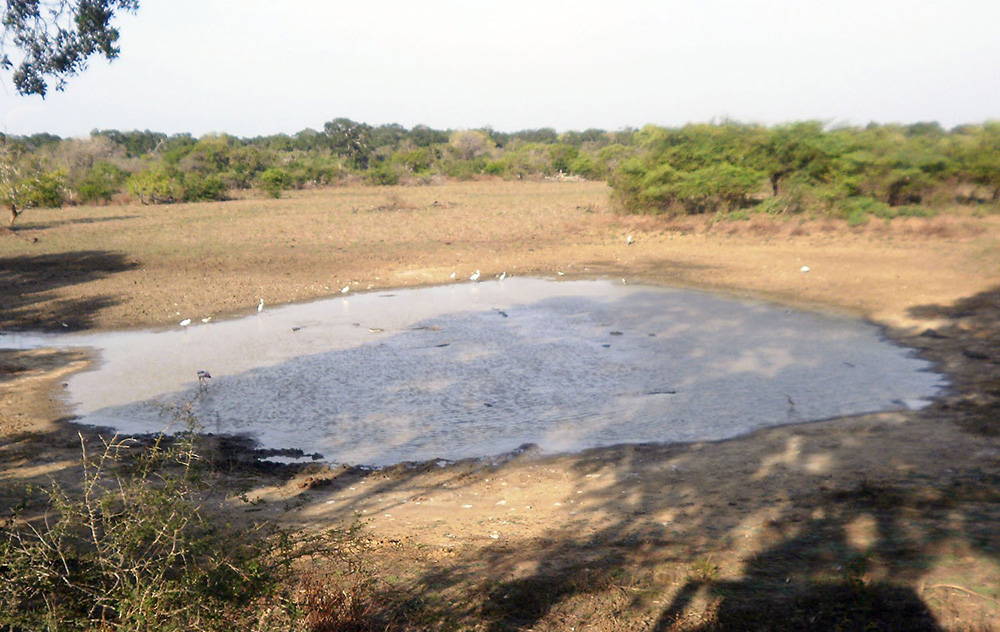
The water came quietly at first, a steady rise along the riverbanks, familiar to communities who have lived beside Sri Lanka’s great waterways for generations. But within hours, these same rivers had swollen into raging, unpredictable forces. The Kelani Ganga overflowed. The Nilwala broke its margins. The Bentara, Kalu, and Mahaweli formed churning, chocolate-brown channels cutting through thousands of homes.
When the floods finally began to recede, villagers emerged to assess the damage, only to be confronted by another challenge: crocodiles. From Panadura’s back lanes to the suburbs of Colombo, and from the lagoons around Kalutara to the paddy fields of the dry zone, reports poured in of crocodiles resting on bunds, climbing over fences, or drifting silently into garden wells.
For many, these encounters were terrifying. But to Sri Lanka’s top herpetologists, the message was clear: this is what happens when climate extremes collide with shrinking habitats.
“Crocodiles are not invading us … we are invading floodplains”
Sri Lanka’s foremost crocodile expert, Dr. Anslem de Silva, Regional Chairman for South Asia and Iran of the IUCN/SSC Crocodile Specialist Group, has been studying crocodiles for over half a century. His warning is blunt.
“When rivers turn into violent torrents, crocodiles simply seek safety,” he says. “They avoid fast-moving water the same way humans do. During floods, they climb onto land or move into calm backwaters. People must understand this behaviour is natural, not aggressive.”
In the past week alone, Saltwater crocodiles have been sighted entering the Wellawatte Canal, drifting into the Panadura estuary, and appearing unexpectedly along Bolgoda Lake.
“Saltwater crocodiles often get washed out to sea during big floods,” Dr. de Silva explains. “Once the current weakens, they re-enter through the nearest lagoon or canal system. With rapid urbanisation along these waterways, these interactions are now far more visible.”
- An adult Salt Water Crocodile (Crocodylus porosus) (Photo -Madura de Silva)
- Adult Mugger (Crocodylus plaustris) Photo -Laxhman Nadaraja
- A Warning sign board
- A Mugger holding a a large Russell ’s viper (Photo- R. M. Gunasinghe)
- Anslem de Silva
- Suranjan Karunarathna
This clash between wildlife instinct and human expansion forms the backdrop of a crisis now unfolding across the island.
A conflict centuries old—now reshaped by climate change
Sri Lanka’s relationship with crocodiles is older than most of its kingdoms. The Cūḷavaṃsa describes armies halted by “flesh-eating crocodiles.” Ancient medical texts explain crocodile bite treatments. Fishermen and farmers around the Nilwala, Walawe, Maduganga, Batticaloa Lagoon, and Kalu Ganga have long accepted kimbula as part of their environment.
But the modern conflict has intensified dramatically.
A comprehensive countrywide survey by Dr. de Silva recorded 150 human–crocodile attacks, with 50 fatal, between 2008 and 2010. Over 52 percent occurred when people were bathing, and 83 percent of victims were men engaged in routine activities—washing, fishing, or walking along shallow margins.
Researchers consistently emphasise: most attacks happen not because crocodiles are unpredictable, but because humans underestimate them.
Yet this year’s flooding has magnified risks in new ways.
“Floods change everything” — Dr. Nimal D. Rathnayake
Herpetologist Dr. Nimal Rathnayake says the recent deluge cannot be understood in isolation.
“Floodwaters temporarily expand the crocodile’s world,” he says. “Areas people consider safe—paddy boundaries, footpaths, canal edges, abandoned land—suddenly become waterways.”
Once the water retreats, displaced crocodiles may end up in surprising places.
“We’ve documented crocodiles stranded in garden wells, drainage channels, unused culverts and even construction pits. These are not animals trying to attack. They are animals trying to survive.”
According to him, the real crisis is not the crocodile—it is the loss of wetlands, the destruction of natural river buffers, and the pollution of river systems.
“When you fill a marsh, block a canal, or replace vegetation with concrete, you force wildlife into narrower corridors. During floods, these become conflict hotspots.”
Past research by the Crocodile Specialist Group shows that more than 300 crocodiles have been killed in retaliation or for meat over the past decade. Such killings spike after major floods, when fear and misunderstanding are highest.
“Not monsters—ecosystem engineers” — Suranjan Karunaratne
On social media, flood-displaced crocodiles often go viral as “rogue beasts.” But conservationist Suranjan Karunaratne, also of the IUCN/SSC Crocodile Specialist Group, says such narratives are misleading.
“Crocodiles are apex predators shaped by millions of years of evolution,” he says. “They are shy, intelligent animals. The problem is predictable human behaviour.”
In countless attack investigations, Karunaratne and colleagues found a repeated pattern: the Three Sames—the same place, the same time, the same activity.
“People use the same bathing spot every single day. Crocodiles watch, learn, and plan. They hunt with extraordinary patience. When an attack occurs, it’s rarely random. It is the culmination of observation.”
He stresses that crocodiles are indispensable to healthy wetlands. They: control destructive catfish populations, recycle nutrients, clean carcasses and diseased fish, maintain biodiversity, create drought refuges through burrows used by amphibians and reptiles.
“Removing crocodiles destroys an entire chain of ecological services. They are not expendable.”
Karunaratne notes that after the civil conflict, Mugger populations in the north rebounded—proof that crocodiles recover when given space, solitude, and habitat.
Floods expose a neglected truth: CEEs save lives—if maintained In high-risk communities, Crocodile Exclusion Enclosures (CEEs) are often the only physical barrier between people and crocodiles. Built along riverbanks or tanks, these enclosures allow families to bathe, wash, and collect water safely.
Yet Dr. de Silva recounts a tragic incident along the Nilwala River where a girl was killed inside a poorly maintained enclosure. A rusted iron panel had created a hole just large enough for a crocodile to enter.
“CEEs are a life-saving intervention,” he says. “But they must be maintained. A neglected enclosure is worse than none at all.”
Despite their proven effectiveness, many CEEs remain abandoned, broken or unused.
Climate change is reshaping crocodile behaviour—and ours
Sri Lanka’s floods are no longer “cycles” as described in folklore. They are increasingly intense, unpredictable and climate-driven. The warming atmosphere delivers heavier rainfall in short bursts. Deforested hillsides and filled wetlands cannot absorb it.
Rivers swell rapidly and empty violently.
Crocodiles respond as they have always done: by moving to calmer water, by climbing onto land, by using drainage channels, by shifting between lagoons and canals, by following the shape of the water.
But human expansion has filled, blocked, or polluted these escape routes.
What once were crocodile flood refuges—marshes, mangroves, oxbow wetlands and abandoned river channels—are now housing schemes, fisheries, roads, and dumpsites.
Garbage, sand mining and invasive species worsen the crisis
The research contained in the uploaded reports paints a grim but accurate picture. Crocodiles are increasingly seen around garbage dumps, where invasive plants and waste accumulate. Polluted water attracts fish, which in turn draw crocodiles.
Excessive sand mining in river mouths and salinity intrusion expose crocodile nesting habitats. In some areas, agricultural chemicals contaminate wetlands beyond their natural capacity to recover.
In Borupana Ela, a short study found 29 Saltwater crocodiles killed in fishing gear within just 37 days.
Such numbers suggest a structural crisis—not a series of accidents.
Unplanned translocations: a dangerous human mistake
For years, local authorities attempted to reduce conflict by capturing crocodiles and releasing them elsewhere. Experts say this was misguided.
“Most Saltwater crocodiles have homing instincts,” explains Karunaratne. “Australian studies show many return to their original site—even if released dozens of kilometres away.”
Over the past decade, at least 26 Saltwater crocodiles have been released into inland freshwater bodies—home to the Mugger crocodile. This disrupts natural distribution, increases competition, and creates new conflict zones.
Living with crocodiles: a national strategy long overdue
All three experts—Dr. de Silva, Dr. Rathnayake and Karunaratne—agree that Sri Lanka urgently needs a coordinated, national-level mitigation plan.
* Protect natural buffers
Replant mangroves, restore riverine forests, enforce river margin laws.
* Maintain CEEs
They must be inspected, repaired and used regularly.
* Public education
Villagers should learn crocodile behaviour just as they learn about monsoons and tides.
* End harmful translocations
Let crocodiles remain in their natural ranges.
* Improve waste management
Dumps attract crocodiles and invasive species.
* Incentivise community monitoring
Trained local volunteers can track sightings and alert authorities early.
* Integrate crocodile safety into disaster management
Flood briefings should include alerts on reptile movement.
“The floods will come again. Our response must change.”
As the island cleans up and rebuilds, the deeper lesson lies beneath the brown floodwaters. Crocodiles are not new to Sri Lanka—but the conditions we are creating are.
Rivers once buffered by mangroves now rush through concrete channels. Tanks once supporting Mugger populations are choked with invasive plants. Wetlands once absorbing floodwaters are now levelled for construction.
Crocodiles move because the water moves. And the water moves differently today.
Dr. Rathnayake puts it simply:”We cannot treat every flooded crocodile as a threat to be eliminated. These animals are displaced, stressed, and trying to survive.”
Dr. de Silva adds:”Saving humans and saving crocodiles are not competing goals. Both depend on understanding behaviour—ours and theirs.”
And in a closing reflection, Suranjan Karunaratne says:”Crocodiles have survived 250 million years, outliving dinosaurs. Whether they survive the next 50 years in Sri Lanka depends entirely on us.”
For now, as the waters recede and the scars of the floods remain, Sri Lanka faces a choice: coexist with the ancient guardians of its waterways, or push them into extinction through fear, misunderstanding and neglect.
By Ifham Nizam
-
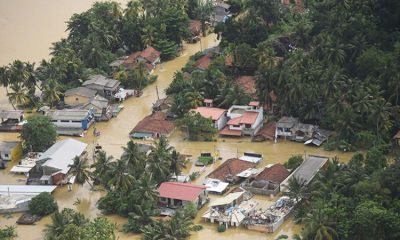
 News6 days ago
News6 days agoWeather disasters: Sri Lanka flooded by policy blunders, weak enforcement and environmental crime – Climate Expert
-
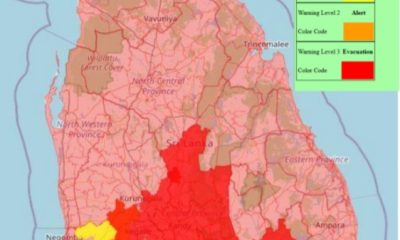
 Latest News7 days ago
Latest News7 days agoLevel I landslide RED warnings issued to the districts of Badulla, Colombo, Gampaha, Kalutara, Kandy, Kegalle, Kurnegala, Natale, Monaragala, Nuwara Eliya and Ratnapura
-
News3 days ago
Lunuwila tragedy not caused by those videoing Bell 212: SLAF
-

 Latest News7 days ago
Latest News7 days agoINS VIKRANT deploys helicopters for disaster relief operations
-
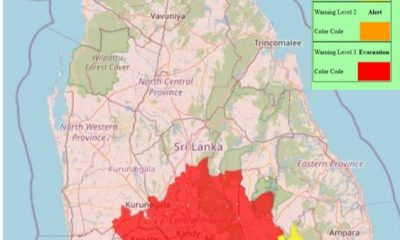
 Latest News5 days ago
Latest News5 days agoLevel III landslide early warnings issued to the districts of Badulla, Kandy, Kegalle, Kurunegala, Matale and Nuwara-Eliya
-
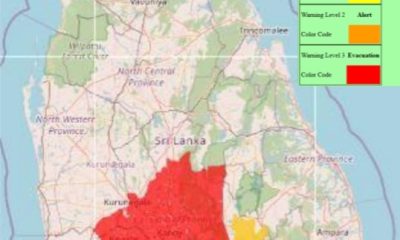
 News2 days ago
News2 days agoLevel III landslide early warning continue to be in force in the districts of Kandy, Kegalle, Kurunegala and Matale
-

 Features4 days ago
Features4 days agoDitwah: An unusual cyclone
-

 Latest News5 days ago
Latest News5 days agoUpdated Payment Instructions for Disaster Relief Contributions




